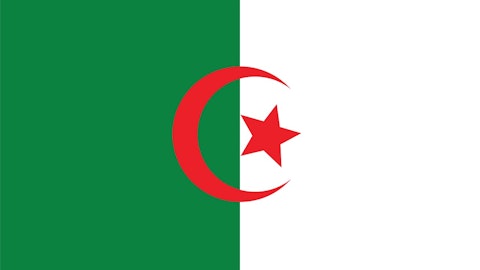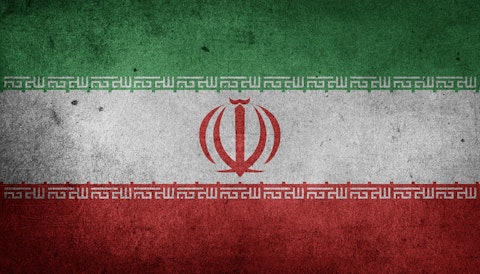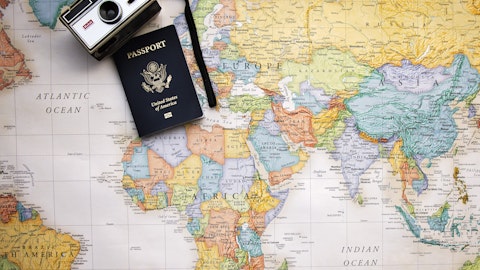In this article, we will take a look at the 25 countries with the lowest female employment.
Increasing the number of work opportunities for women has been an uphill battle for years. Some claim that it is a manifestation of economic backwardness as some countries continue to uphold the patriarchal system’s supremacy. For this reason, discrimination based on gender is still pervasive and tolerated in some places. This includes getting less pay than their male coworkers for doing the same job, being passed over for leadership positions or promotions, or even being refused employment due to a marriage or pregnancy. Worse, women are likewise experiencing sexual harassment or bullying within their workplaces.
Globally, women face significantly greater challenges in securing employment compared to men. Even when employed, women often find themselves working in low-quality jobs under precarious conditions, and unfortunately, there are limited prospects for improvement in the near future. Labor force participation is a term used to describe individuals who are either employed or actively seeking employment. Currently, the global labor force participation rate for women stands at just below 47%, while for men, it’s notably higher at 72%. This substantial 25-percentage-point difference is even more pronounced in specific regions, where some areas grapple with gender gaps exceeding 50 percentage points. Women who aspire to join the workforce encounter more significant hurdles than their male counterparts. Moreover, vulnerable employment is prevalent for both genders, but it manifests differently. Women tend to be disproportionately represented in specific types of vulnerable work, with men more likely to engage in own-account employment, while women are often found assisting in household or family businesses.
Across Asia, the participation of women in the labor force spans a wide range, from as low as 16% in Afghanistan to as high as 83% in Nepal. Meanwhile, male labor force participation varies from 52% in Timor-Leste to 89% in Nepal. Despite notable economic growth, declining fertility rates, and improved female education, women’s involvement in the labor force has remained relatively limited. Available evidence suggests that several measures can contribute to enhancing female labor force participation. These include the implementation of job quotas, the expansion of information accessibility, the establishment of more lucrative labor opportunities, and the adoption of free trade policies. Furthermore, additional research into areas such as vocational training, the better alignment of job opportunities with individuals’ skills, the provision of parental leave or flexible working arrangements, and the facilitation of labor force mobility holds the promise of shedding light on effective interventions to elevate the participation of women in the workforce.
In the United States, which boasts the largest economy in terms of gross domestic product (GDP), the unemployment rate stood at 3.5% as of the end of February 2020. This marked the lowest rate in fifty years. However, with the onset of the COVID-19 pandemic and its consequential economic repercussions, the unemployment rate swiftly surged to 14.7% by April.
Efforts to reduce gender disparities and enhance working conditions for women on a global scale are continuously advancing. While considerable progress remains to be made to attain full gender equality, certain nations are notably more dedicated than others to fostering women’s achievements in the business sphere.

Antonio Guillem/Shutterstock.com
Our Methodology
To compile our list of the 25 countries with the lowest female employment rates, an extensive study drew upon insights from five academic research studies. In this comprehensive analysis, countries mentioned in any of the sources were assigned one point each. The female employment rates in the labor force for the year 2022 were also documented for reference. Once all the relevant information had been meticulously gathered from various reputable sources, a comprehensive and rigorous evaluation process was initiated to identify and compile a list of the 25 countries with the lowest female employment rates globally. The resulting list of the 25 countries with the lowest female employment rates stood as a stark reminder of the persistent gender disparities that persist in many parts of the world.
So here are the 25 countries with the lowest female employment in the world.
25 Countries With The Lowest Female Employment
25. Fiji
The diminished labor workforce involvement of Fijian and Indian women in Fiji can be attributed to the presence of young children and larger family sizes. In the context of cultural norms and traditions, it can be recognized that women in Fiji reside within a societal framework that is characterized by paternalism and patriarchy. Within this framework, women typically assume a subordinate position within the household, primarily engaging in domestic responsibilities such as meal preparation and housekeeping. In many community and village settings, women are often subjected to a subordinate status in relation to men. According to the most recent data available, the female workforce participation rate in Fiji stands at a mere 38%.
24. Moldova
Significant advancements have been achieved in the Republic of Moldova in recent years with regard to the promotion of gender equality. The representation of women in leadership and decision-making processes has exhibited a slow and consistent upward trend, encompassing even the most marginalized and vulnerable segments of society. According to the most recent data, the female labour force participation in developing countries like the Republic of Moldova stands at 38%.
23. Bangladesh
Women in Bangladesh are involved in a diverse range of work activities, encompassing both domestic labor within the household and paid employment outside of it. However, the labor performed by women is frequently subject to undervaluation and underrepresentation. Bangladesh is one of the countries with the lowest female employment since the labor workforce participation rate in the country stands at a mere 38%.
22. Gabon
Gabon, like numerous other nations, has undertaken a comprehensive set of reforms to its civil and penal codes with the aim of advancing gender equality. These reforms specifically aim to enhance women’s rights within domestic and professional spheres. In Gabon, pre-reform data indicated a notable disparity in financial inclusion, with women exhibiting lower rates compared to men. Specifically, the statistics revealed that merely 30% of women possessed a bank account, whereas the corresponding figure for men stood at 38%. As of 2022, only 39% of women are part of the labor workforce in Gabon.
21. Bosnia and Herzegovina
Bosnia and Herzegovina has successfully ratified numerous international treaties and has made significant efforts to develop a comprehensive legal framework at various levels, encompassing the state, federal, and entity domains. These endeavors have also encompassed the enactment of legislation promoting gender equality. Nevertheless, Bosnian women continue to encounter obstacles that hinder their full participation in the workforce. Bosnia and Herzegovina have significant gender disparities in employment and economic participation, with notable discrepancies between the numbers of women and men. A higher proportion of males are engaged in both salaried employment and self-employment, while a lower proportion of males experience unemployment. Additionally, males exhibit a greater ability to secure and maintain employment. In Bosnia and Herzegovina, the labor workforce comprises only 39% women.
20. Libya
In Libya, it is noteworthy that women have achieved significant advancements in terms of career opportunities beyond domestic spheres. These achievements can be attributed to enhanced educational accessibility and a growing societal acceptance of women engaging in paid work. Once again, it may be argued that the government did not serve as the key driving factor behind this phenomenon. The employment patterns of women in Libya are predominantly shaped by individual preferences and decisions. The current labor workforce participation rate for women in Libya is 34%. A wide range of occupational roles were occupied throughout several sectors of the economy, encompassing professions such as lawyers, doctors, judges, and high-ranking governmental positions.
19. Sri Lanka
Ranking 19th in our list of the 25 countries with the lowest female employment is Sri Lanka. In Sri Lanka, there exists a notable disparity in employment rates between men and women, with men being twice as likely to be working compared to women. The female labor workforce participation rate in the country is comparatively lower than that of its neighboring countries in the area, such as Nepal, China, and Bangladesh. According to current data, the portion of women engaged in the labor workforce in Sri Lanka will stand at 33% in 2022.
18. Puerto Rico
During the early 1900s, the advancement of women’s rights in Puerto Rico facilitated increased opportunities for women, enabling their participation in occupations and professions that had traditionally been dominated by men, such as the medical field. Puerto Rican women have demonstrated exceptional achievements across various domains, including business, politics, and science. Moreover, they have effectively represented their homeland in diverse international arenas, encompassing beauty pageants and sports competitions. According to current data, the labor workforce in Puerto Rico includes approximately 32% women as of 2022.
17. Oman
Under the leadership of a progressive and modernizing figure, women were afforded the opportunity to pursue employment in a wide range of professions, including but not limited to banking, medicine, engineering, and teaching. Based on a census conducted by UNICEF, it was found that 40% of women who were engaged in economic activities had positions in professional job categories. In the year 2000, the proportion of female workers in the Omani labor workforce amounted to 17%. In the year 2022, the labor workforce participation rate for women in Oman will stand at 32%.
16. Tajikistan
The occurrence of World War II in Tajikistan led to a notable increase in the participation of women in the workforce beyond domestic settings. In light of the war-induced absence of a significant portion of the male workforce from their civilian occupations, women had the responsibility of mitigating the resulting scarcity. However, following a period of intense violent conflict in the 1990s that resulted in significant destabilization, the subsequent era of the 21st century witnessed a notably feeble economy characterized by pervasive unemployment and a multitude of social challenges. Consequently, a considerable portion of the population, predominantly male individuals employed in the construction sector or other occupations requiring limited expertise, chooses to migrate overseas in pursuit of employment prospects. Women who choose to stay at home frequently face significant economic hardship, often relying on subsistence farming as a means of survival. As of the present moment, the proportion of women engaged in gainful employment in Tajikistan in the year 2022 stands at 31%.
15. Nepal
In Nepal, the labor workforce participation rate for women stands at 29%. The state of women’s education and employment in urban centers exhibits some degree of progress, whereas the situation remains unchanged in rural areas in Nepal. The majority of women in Nepal are engaged in unpaid labor within the domestic context, with over 76% of women actively participating in agricultural activities. However, their significant contributions to the economic benefits received by the family remain unrecognized.
14. Sudan
The women and youth of Sudan experience significant economic deprivation. The prevalence of poverty is persistently increasing, worsened by the widespread lack of employment opportunities, notably affecting women and young individuals. The current labor workforce participation rate for women in Sudan is significantly low, standing at only 29%. Women experience significant marginalization within the labor market as a whole. The depicted image evidently portrays a discouraging scenario for women to secure a satisfactory livelihood, thereby rendering them the most marginalized demographic within the labor market of Sudan.
13. Saudi Arabia
Saudi Arabia ranks 13th on our list of the 25 countries with the lowest female employment. Based on the findings of the World Bank, Saudi Arabia has undertaken notable efforts since 2017 to enhance working conditions for women. These initiatives encompass a range of areas, such as addressing concerns related to mobility, sexual harassment, pensions, and workplace rights, which include safeguards against employment discrimination. The legislation additionally provides employment-discrimination safeguards for women, granting them the ability to register as co-heads of a family, reside autonomously from their spouse, and qualify for guardianship of youngsters. In 2008, the customary practice of mandating women obtain the consent of a guardian in order to pursue employment was abolished. As of 2022, the prevailing rate of female labor workforce participation in Saudi Arabia stands at a relatively modest 28%.
12. Mauritania
In Mauritania, the female labor workforce participation rate stands at 26%. Despite certain advancements made in the last decade, women in Mauritania continue to experience discrimination within the legal sphere. In the year 2020, the nation was positioned at the 177th position globally on the Women, Business, and Law Index. Apart from disparities in wages and limitations on property rights, women face restrictions in job opportunities, are denied the legal ability to be household heads, and lack safeguards against inequalities in accessing bank loans and employment opportunities.
11. Tunisia
The current labor workforce participation percentage for women in Tunisia is a modest 26%. Tunisia’s historical practice of “state feminism” and its robust civil society, encompassing several organizations dedicated to human rights, labor, and women’s rights, have positioned Tunisian women ahead of their counterparts in other Arab nations. Consequently, women in Tunisia are actively engaged in a wide range of professions and occupations. However, a significant proportion of Tunisian women continue to be excluded from the labor sector, encounter unstable job arrangements, or experience unemployment.
10. Pakistan
The current labor workforce participation rate for women in Pakistan is 25%. In Pakistan, there exists a notable disparity between men and women in terms of access to property, education, employment, and other related opportunities, with women experiencing lower levels of access in these domains. The social and cultural milieu of Pakistani society has traditionally exhibited a prevailing patriarchal structure. The level of women’s participation in society beyond the realm of the home is rather low. That is why Pakistan is one of the countries with the lowest female employment in the world.
9. India
In contrast to prevailing notions, a substantial proportion of women in India are actively involved in both conventional and unconventional forms of employment. Despite the substantial presence of women in the workforce, the nation has a female labor workforce participation rate of 24%. A greater proportion of Indian women are engaged in the informal sector compared to their male counterparts. Nevertheless, the proportion of women in the paid labor market is significantly lower compared to men.
8. Morocco
Morocco ranks 8th on our list of the 25 countries with the lowest female employment. Throughout history, there has been a notable disparity in the treatment of women in Morocco as compared to their male counterparts. The conventional societal structure has historically exhibited a patriarchal system that is characterized by male dominance. In the context of marital practices in Morocco, it was observed that women possessed little control in selecting their spouses, and subsequent to marriage, they experienced a lack of financial autonomy. A shortage of educational possibilities and prevailing gender biases impede women’s access to employment prospects within the country. The work force participation rate among Moroccan women stands at a mere 21%.
7. Somalia
According to the Somalia Country Economic Memorandum, a significant proportion of the active labor population in Somalia engages in self-employment as a result of the scarcity of formal wage employment possibilities. Specifically, more than two-thirds of individuals in the labor workforce are self-employed. Women and young individuals encounter obstacles that hinder their engagement in economic activities. The aforementioned phenomenon can be attributed to the pervasive influence of established societal norms and expectations, particularly with regard to women. Consequently, these factors act as barriers that prevent women from fully participating in the labor workforce. The labor workforce participation rate for women in Somalia stands at a mere 21%.
6. Djibouti
In Djibouti, 61% of women are illiterate, and only 19% of women are employed. Djibouti was already facing significant challenges related to poverty prior to the onset of the COVID-19 pandemic. Prior to the onset of the pandemic, around 250,000 individuals in Djibouti were in need of immediate and direct aid. Furthermore, it is worth noting that there are significant issues that persist in Djibouti culture, namely illiteracy, which disproportionately impacts a considerable portion of the female population, and the archaic practice of female genital mutilation that continues to be ingrained in its cultural norms. Despite significant advancements in this area through the years, Djibouti still faces considerable challenges in attaining gender equality.
5. Algeria
In Algeria, the percentage of women engaged in the formal sector’s paid labor workforce stands at a mere 16%. The issue of women’s employment is a subject of controversy in Algeria, along with various other nations. In an interview, an Algerian woman offered her perspective on the inflexibility of our society. She expressed “I take pride in my professional accomplishments, yet there are some men who assert that our employment has resulted in losing some of their own career opportunities.” Despite the notable progress observed in the Algerian political domain, characterized by the representation of women comprising more than 31% of women in the National Assembly, their level of economic engagement continues to be significantly limited.

Pixabay/Public Domain
4. Iran
The process of Islamization has been associated with the marginalization of women in the labor workforce. However, an alternative perspective posits that Islamization, along with its practice of sex segregation, has had a positive impact on women. This viewpoint suggests that conservative households, as a result of Islamization, have been more inclined to permit their daughters to pursue education and employment opportunities. However, it is evident that, three decades after the revolution, the representation of women in the formal sector’s paid labor workforce stands at a mere 16% as of 2022. This figure pertains to women who are eligible for various labor law benefits, including paid holidays, maternity leave, pensions, and other related measures.

Pixabay/Public Domain





